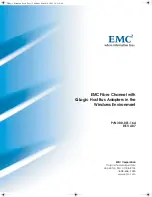
Ethernet Port Commands
Page 216
7710 SR OS Interface Configuration Guide
The
no
form of the command returns the class number value for the E
thernet egress expanded
secondary shaper
to the default value.
Parameters
class-number —
Specifies the class number of the class for the secondary shaper.
Values
1— 8
rate
{
kilobits-per-second |
max
}
—
Specifies the rate limit for the secondary shaper.
Values
max
, 1— 10000000
monitor-threshold size-in-kilobytes —
Specifies the monitor threshold for the secondary shaper.
Values
0— 8190
vport
Syntax
vport name
[
create
]
no vport name
Context
config>port>ethernet>access>egress
Description
This command configures a scheduling node, referred to as virtual port, within the context of an egress
Ethernet port. The vport scheduler operates exactly like a port scheduler with the difference that multiple
vport objects can be configured on the egress context of an Ethernet port.
The vport is always configured at the port level even when a port is a member of a LAG.
The user applies a port scheduler policy to a vport using the following command:
configure>port>ethernet>acess>egress>vport>port-scheduler-policy port-scheduler-policy-name
A vport cannot be parented to the port scheduler. The CLI will not allow the user to apply a port scheduler
policy to a vport if one has been applied to the port. Conversely, the CLI will not allow the user to apply a
port scheduler policy to the egress of an Ethernet port if one has been applied to any vport defined on the
access egress context of this port. It is thus important the user ensures that the sum of the max-rate parameter
value in the port scheduler policies of all vport instances on a given egress Ethernet port does not
oversubscribe the port? rate.
SAP and subscriber host queues can be port-parented to a vport scheduler in a similar way they port-parent
to a port scheduler.
Parameters
name —
Specifies the name of the vport scheduling node and can be up to 32 ASCII characters in length.
This does not need to be unique within the system but is unique within the port or a LAG.
host-match
Syntax
host-match dest description-string
[
create
]
no host-match dest destination-string
Context
config>port>ethernet>access>egress>vport
Summary of Contents for 7710 SR SONET
Page 6: ...Page 6 7710 SR OS Interface Configuration Guide Table of Contents...
Page 8: ...Page 8 7710 SR OS Interface Configuration Guide List of Tables...
Page 10: ...Page 10 7710 SR OS Interface Configuration Guide List of Figures...
Page 14: ...Preface Page 14 7710 SR OS Interface Configuration Guide...
Page 16: ...Getting Started Page 16 7710 SR OS Interface Configuration Guide...
Page 18: ...Page 18 7710 SR OS Interface Configuration Guide Configuration Notes on page 107...
Page 166: ...Service Management Tasks Page 152 7710 SR OS Interface Configuration Guide...
Page 354: ...Multi Chassis Redundancy Commands Page 328 7710 SR OS Interface Configuration Guide...
Page 494: ...Standards and Protocols Page 494 Standards and Protocols...
Page 496: ...Index Page 496 7710 SR OS Interface Configuration Guide...
















































